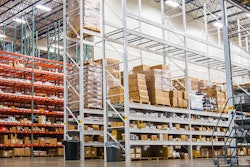
 Dr. Madhav Durbha, Group VP of Industry Strategy, LLamasoft
Dr. Madhav Durbha, Group VP of Industry Strategy, LLamasoftIt’s not just Starbucks and straws: sustainability is something every company needs to take seriously. According to a recent Nielsen study, two-thirds of global consumers are willing to pay more for products from sustainable brands or brands that are committed to being environmentally friendly. As such, “going green” is becoming an expectation. Those companies that go the extra mile have much to gain in terms of social status and branding.
Luckily for today’s organizations, the rise of the analytics-driven supply chain has made implementing green practices that affect both the organization’s carbon footprint and their bottom line easier than ever. By leveraging supply chain data, organizations can gain end-to-end visibility, identifying opportunities to be greener while also streamlining their overall operations.
As digitally connected supply chains produce and consume more data, the opportunities to drive efficiencies are rising. Data can help organizations better understand material usage and consumption. Organizations can now have real-time visibility into changing demand patterns and asset utilization, enabling them to order and consume materials more precisely. For example, leading farming equipment makers and fertilizer companies are collaborating on enabling digital ecosystems that provide prescriptive recommendations to farmers on when to apply water, fertilizers and pesticides to crops with greater precision, significantly improving yields and reducing wastage. These analytics are based on real-time tracking of factors such as weather patterns, soil chemistry, mineral content and pest conditions. This ability to gain real-time insights into points of consumption not only ensures organizations are only ordering and using the amount of materials necessary, but also allows them to align their inventories with consumption patterns, reducing the amount of product sitting on shelves and lowering warehousing costs. Not only does this ability help the environment, it also helps the companies’ bottom line.
Once a product is ready to be sold, it is important for organizations to consider sustainable options for getting that product to consumers. Packaging is one of the first places organizations should look for opportunities: omni-channel and direct-to-consumer business models are driving an increase in parcel shipments, meaning organizations are spending significant sums of money on packaging. By adopting sustainable packaging – especially options that reduce plastic usage – organizations can significantly reduce the environmental load of their direct-to-consumer shipments without sacrificing the customer convenience that comes with more frequent, smaller deliveries. By leveraging active packaging, i.e., packaging that can interact with its contents to monitor freshness and extend shelf life, driven by analytics, one can further reduce wastage.
Another example of one of the biggest sources of supply chain inefficiency and non-sustainability is transportation. From the movement of materials from one warehouse to another to last mile delivery, most organizations, especially those that are distribution-intense, are constantly moving their products via air, rail, ship, or truck. Using the visibility provided by supply chain data, today’s organizations should look closely at their transportation routes and costs and make adjustments to cut down on fuel usage. Organizations should explore sharing of transportation capacity via platforms that connect shippers and carriers to consolidate shipments and reduce empty miles, resulting in lowered fuel usage and cost, creating a win-win for shippers and carriers alike. Further, data-driven organizations can leverage real-time traffic feeds that allow them to optimize routes to avoid congested areas, making delivery routes more efficient and reducing CO2 emissions. Similar sharing of capacities driven by visibility should be explored on the warehousing side as well.
As organizations look to implement sustainable supply chain practices, they must be sure to take a holistic view of their supply chain network and ensure it is optimally positioned to enable meeting customer service expectations while minimizing costs. Not doing so can result in opportunities being overlooked, or worse, result in process shifts that seem like a positive change, but instead have negative impacts on the overall supply chain. Organizations should also review their product flow paths and supply chain policies to make the necessary adjustments as demand patterns shift, to keep the networks efficient. Further, as such network optimization and policy decisions are made and changes are implemented, it is important for organizations to be able to operationalize such analysis on an ongoing basis so they can stay ahead of any opportunities that evolve. By ensuring full alignment, organizations will be able to affect positive change in their supply chains, increasing sustainability and reducing cost.
Dr. Madhav Durbha is Group VP of Industry Strategy at LLamasoft.























